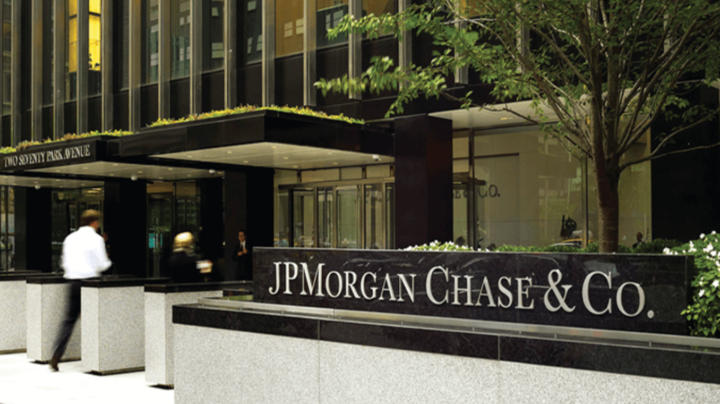JPMorgan Chase, one of the world’s largest and most influential financial institutions, recently released its financial report for the third quarter, revealing a substantial 35% increase in profits. This remarkable growth in net income, which surged from $9.7 billion in the previous year to an impressive $13.2 billion, exceeded the expectations of financial analysts, who had predicted earnings of approximately $11.9 billion.
The driving forces behind this exceptional performance were multifaceted, encompassing higher interest rates and lower-than-normal loan losses. These factors combined to create a financial landscape that favored JPMorgan Chase during the quarter. However, the bank’s chief executive, Jamie Dimon, was forthright about acknowledging that the results were somewhat exceptional due to over-earning on net interest income and credit costs that were below the usual standard. He further emphasized that both these factors were likely to normalize over time.
The impact of this robust performance reverberated not only through the banking industry but also through the broader economic landscape. As the Federal Reserve took action to raise interest rates in response to concerns about inflation, JPMorgan Chase and other financial institutions reaped the rewards of higher interest rates. This was a boon for banks because it allowed them to charge more for loans and earn higher returns on their investments, thereby significantly boosting their profitability.

Beyond the financial metrics, Jamie Dimon’s remarks during the earnings release drew substantial attention. Dimon, a prominent figure in the global financial industry, expressed his concerns about geopolitical conflicts in Ukraine and Israel, characterizing the current global situation as “may be the most dangerous time the world has seen in decades.” His observations on global affairs carry considerable weight and are closely monitored across Wall Street and the international financial community.
The initial response from the market was positive, with JPMorgan’s shares enjoying an early gain of over 4%. However, they eventually closed 1.5% higher in New York as investors and analysts digested the finer details of the report.
A recurring theme in JPMorgan’s impressive performance over recent quarters has been its significant reliance on net interest income. In the third quarter, net interest income amounted to $22.7 billion, a substantial 30% increase compared to the same period in the previous year. Notably, this figure surpassed the expectations of analysts, who had anticipated net interest income of approximately $22.4 billion. The bank continued to benefit from the Federal Reserve’s ongoing cycle of interest rate increases, and its emergency acquisition of First Republic further contributed to its financial strength.
Net interest income, as a core metric, underscores the difference between what banks pay on deposits and what they earn from loans and other assets. For big banks like JPMorgan, this metric has been particularly favorable in recent times, allowing them to charge more for loans without having to substantially raise the rates offered to savers for deposits.
JPMorgan’s financial report also contained positive news related to its reserves. The bank released $113 million from reserves it had previously set aside for potential losses. This move defied the expectations of financial analysts, who had projected that the bank would add approximately another $850 million to its reserves. This development indicated a higher level of confidence in the bank’s ability to manage potential losses.
One area where JPMorgan continued to excel was in managing loan losses. The report highlighted that the bank continued to benefit from relatively low losses on its loans during the quarter. The net charge-offs portion of loans with losses marked as unrecoverable reached $1.5 billion, more than double the figure for the same quarter a year ago but only up 6% from the second quarter. On an annualized basis, JPMorgan wrote off 47% for every $100 it had loaned out, net of any recoveries it made.
It’s essential to recognize that historically low levels of loan losses have been a result of government stimulus programs that provided financial relief during the early stages of the COVID-19 pandemic. However, as the Federal Reserve continues its series of interest rate increases, there are growing concerns that these higher interest rates might put pressure on borrowers, potentially impacting loan losses in the future.
In terms of future outlook, JPMorgan made some adjustments to its projections. Specifically, it lowered its outlook for the net charge-off rate at its card services business from 2.6% to approximately 2.5%. Additionally, the bank reduced its guidance for full-year expenses, adjusting it from roughly $84.5 billion to approximately $84 billion.
Despite these modifications, JPMorgan continued to demonstrate strength in its investment banking division. The bank reported investment banking fees of $1.7 billion for the quarter, marking a 3% decrease from the same period in the previous year but surpassing analysts’ estimates of $1.6 billion.
In conclusion, JPMorgan Chase’s robust performance in the third quarter reflects a convergence of factors, including higher interest rates and lower loan losses, that propelled the bank to a 35% increase in profits. While the exceptional results were acknowledged by the bank’s CEO, Jamie Dimon, as being somewhat influenced by unique circumstances, they highlight the bank’s resilience and adaptability in a dynamic economic landscape. As the global financial community grapples with geopolitical uncertainties, JPMorgan’s performance underscores its continued significance in the banking industry and its ability to navigate the intricacies of the financial world.
Support InfoStride News' Credible Journalism: Only credible journalism can guarantee a fair, accountable and transparent society, including democracy and government. It involves a lot of efforts and money. We need your support. Click here to Donate
